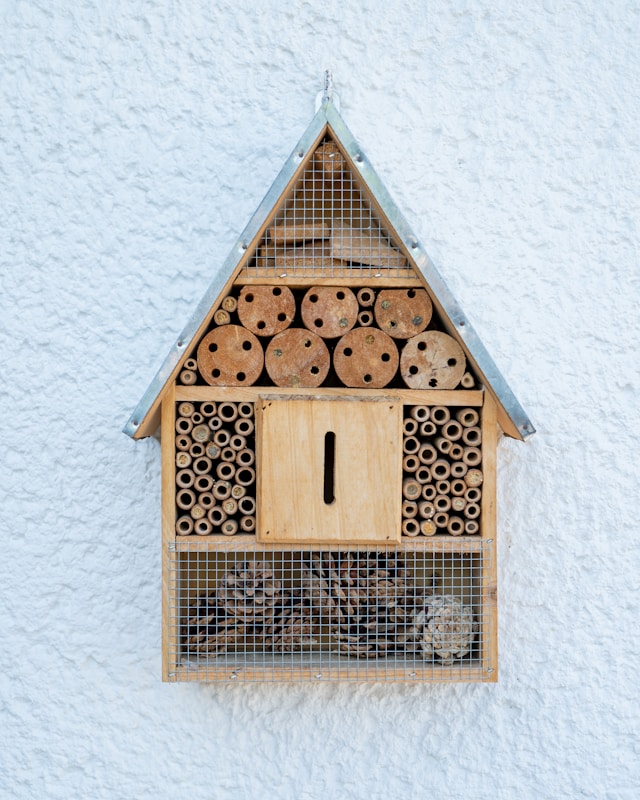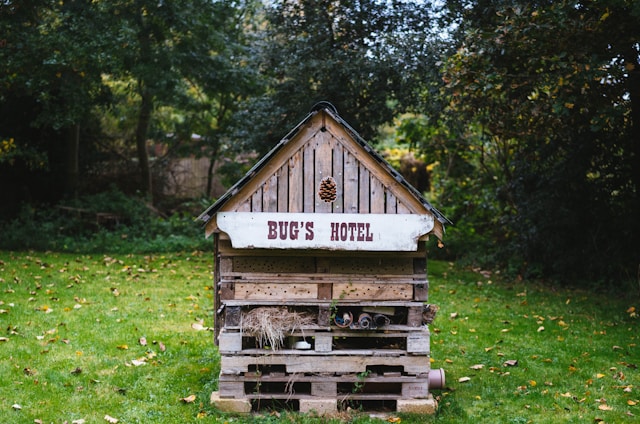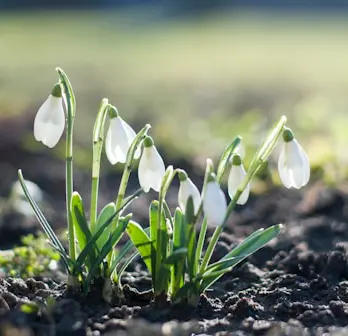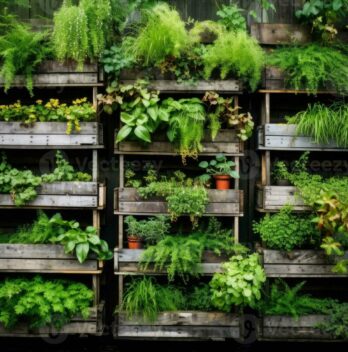Bug hotels are a great way to attract beneficial insects to your garden, helping with pollination and natural pest control. This article will help you find some of the Best bug hotel ideas for your garden. These charming garden additions shelter various insects, such as ladybugs, bees, and butterflies, while enhancing biodiversity.
I’ve had several different bug hotels in my garden over the years. We received a bug hotel a few years ago as a gift, but it was of cheap quality and only lasted a season. Now, we have two bug hotels, which are better quality and have survived the third season. So, investing in a Bug Hotel with proper wood and construction will last longer in the elements of your garden and bring joy to your garden and plants.
If you’re looking for inspiration, here are some of the Best bug hotel ideas for your garden or backyard:
1. Wildlife World Solitary Bee Hive
This bee hive is perfect for attracting solitary bees, such as mason and leafcutter bees, which are excellent pollinators. The Bee Hive offers multiple trays for bees to lay their eggs, easily removable for inspection or cleaning. Crafted from FSC-certified timber, this eco-friendly bug hotel provides a safe haven for solitary bees while helping your garden thrive.
Key Features:
- A hinged roof allows you to open it and see the bee activity in the hive
- Made from sustainable materials
- Weather-resistant roof for year-round use
- Attracts important pollinators to your garden
The Bee House Through A Clever Swivel Roof whic…
2. Lulu Home Wooden Insect Hotel
The Lulu Home Wooden Insect Hotel is designed to attract beneficial insects like butterflies, ladybugs, and bees to your garden. This eco-friendly bug house is made from natural materials and provides a safe habitat for various pollinators and pest controllers. The multi-chamber design accommodates different species, offering them shelter to nest and hibernate. It enhances your garden’s ecosystem by promoting biodiversity and natural pest control.
Key Features:
- Promotes Garden Health: Attracts beneficial insects like ladybugs and bees, which help with natural pest control and pollination.
- Eco-Friendly Materials: Made from natural wood, providing a sustainable and safe habitat for various species.
- Multi-Chamber Design: Offers shelter for different types of insects, supporting biodiversity and enhancing your garden’s ecosystem.
Lulu Hanging Insect Hotel made from wood, Habitat, Bug Hotel Garden, 10.4 X 3.4 X 5.4 Inch<...
3. TIHOOD Natural Wooden Hanging Bee House
The TIHOOD Natural Wooden Hanging Bee House is a stylish and functional insect house that attracts beneficial bugs like bees, ladybugs, and butterflies. Crafted from natural wood, this eco-friendly bug hotel provides a perfect habitat for various species, promoting pollination and natural pest control in your garden. Its multi-chamber design offers separate sections for different insects, helping enhance biodiversity and overall garden health.
Key Features:
- The multi-chamber design supports different insect species for a balanced ecosystem.
- Encourages pollinators and pest controllers in your garden.
- Eco-friendly construction with natural wood materials.
For Gardens Natural Wooden Butterfly Hotel for Bee, Butterfly, Ladybirds, Habitat, Bee Hotel Gard…
4. Esschert Design WA46 Insect House S
The Esschert Design WA46 Insect House S is perfect for small gardens or urban spaces. This compact yet highly effective bug hotel provides a home for bees and other pollinators, supporting your plants’ growth. Made from untreated FSC wood, it’s safe for insects and environmentally friendly, making it an excellent choice for eco-conscious gardeners.
The construction of this particular Bug Hotel stands out. It has a metal roof, which will help the wood last longer in the elements.
Key Features:
- Compact and space-efficient
- Made from eco-friendly materials
- Metal roof
Great design and metal roof make this a long-lasting option for your garden
5. Navaris Wood Insect Hotel
The Navaris Insect Hotel is a well-rounded bug house with sections for bees, butterflies, ladybugs, and other insects. It includes compartments filled with natural materials such as bamboo, wood, and pine cones to suit various species. This stylish bug hotel attracts beneficial insects and serves as a decorative element in your garden.
Key Features:
- Large, multi-chamber design
- Made from natural, untreated wood
- Metal roof to protect the wood from rain and the elements
- Attracts a wide range of helpful insects
Give back to your garden in the best way possible by providing a home to pollinators like wild be…
Why Add a Bug Hotel to Your Garden?
Bug hotels provide crucial shelter and nesting spaces for beneficial insects that support your garden. Pollinators like bees help flowers, fruits, and vegetables grow, while predatory insects like ladybugs naturally control pests such as aphids. A well-placed bug hotel can increase biodiversity, promote healthier plants, and reduce the need for chemical pesticides.

Tips for Setting Up a Bug Hotel
- Location, Location, Location: Place the bug hotel in a sunny, sheltered spot, ideally close to flowers or garden beds. If possible, find a spot with less rain exposure, which will help the bug hotel last longer.
- Materials: To attract different insect species, your bug hotel should include a variety of materials, such as bamboo, wood, and pine cones.
- Maintenance: While bug hotels are low maintenance, they should be checked occasionally to ensure they are clean and functioning correctly.
Conclusion
Investing in a bug hotel helps the environment and supports a healthy and thriving garden. I hope this article helped you determine the best bug hotel ideas. Whether you want to attract bees for pollination or ladybugs for natural pest control, these bug hotels offer a range of options to suit different gardens and budgets. With the correct setup, your garden can become a sanctuary for helpful insects, creating a balanced and eco-friendly environment.

Brian believes the best days are spent outside with soil on your hands. He finds his rhythm in the details of the garden—from carefully tending to established plants to the excitement of propagating new varieties. A true outdoor enthusiast, Brian is here to swap stories, share advice, and celebrate the rewarding work of growing.









